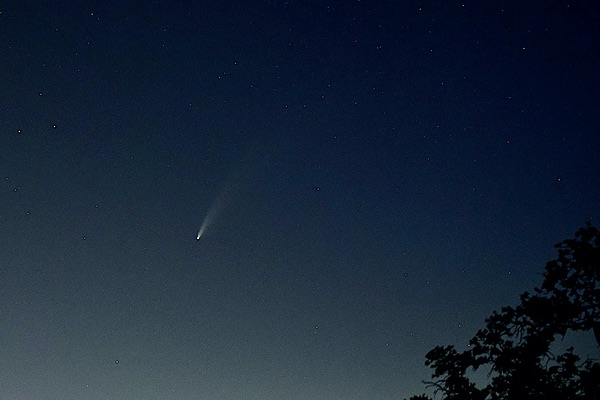
What you should learn from Comet NEOWISEby Hariharan Karthikeyan
|
 It felt like a miracle—what we could hardly see with the naked eye was captured as if it were brighter than any other star. (credit: Hariharan Karthikeyan) |
Nestled between the Big Dipper and horizon, it’s a breathtaking sight. And given current global conditions, that sight can be an escape from everything weighing us down.
| What many of us need in these challenging times is a sense of connectedness. When we think big, and zoom out, we gain a sense of context. |
Let’s face it. Almost no one has been able to reconcile with isolation during this pandemic. What began as sheer boredom has turned into poor mental health for many. Plus, we’ve seen a lot: wildfires in Australia, police brutality, ongoing racial tensions, and, for many students, the continuation of distance learning in August. And to the average person, it’s easy to assume that an object more than 100 million kilometers away wouldn’t wash away our problems here on Earth.
We should think the opposite.
What many of us need in these challenging times is a sense of connectedness. When we think big, and zoom out, we gain a sense of context. We cease to define ourselves by the problems of today, but take everything in, holistically. Our accomplishments. Our ambitions. Our role in the cosmos—that gentle reminder that we’re all made from stardust. Ultimately, we stretch our perception of our own existence beyond the material self and achieve that sense of attachment—to both ourselves and those objects big and far.
So as I stood there on the trail that night, I took pride in having witnessed an event that humanity would not see for another seven millennia. And that thing tens of millions of kilometers away offered connectedness, and then, context, during desperate times.
In the absence of face-to-face interaction, we should all strive to realize our part of something bigger. Then, we can detach ourselves from today’s struggles, realizing that they are temporary. And during these challenging times, you’ll see it for yourself: looking up is a whole lot better than looking down.
This was always true. It’s just more important now than ever.
Note: we are temporarily moderating all comments submitted to deal with a surge in spam.